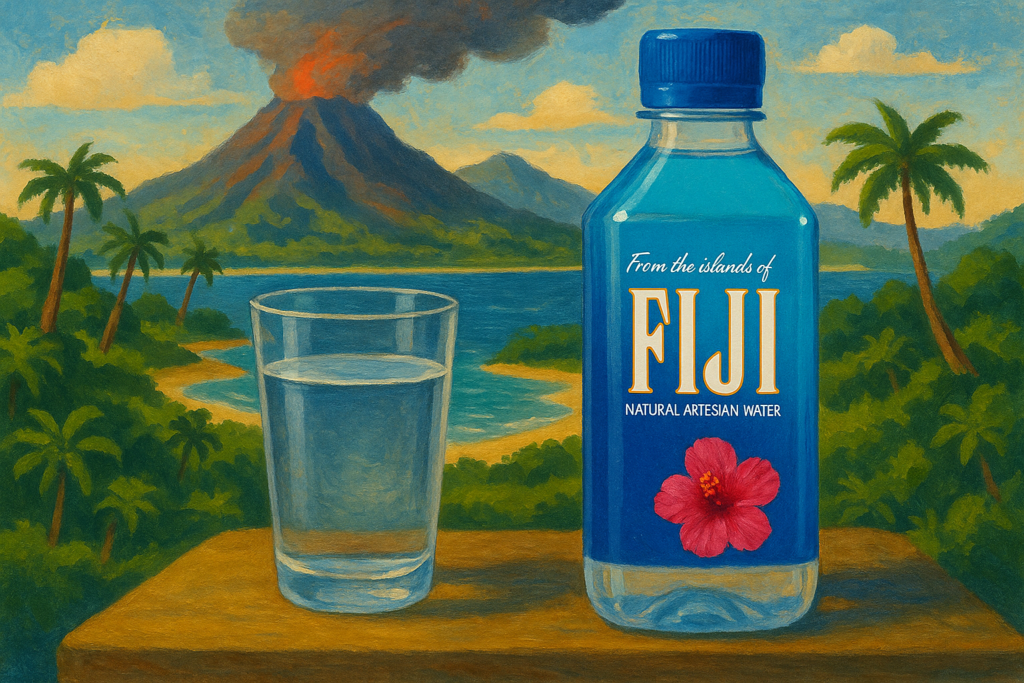Storytime: What is the Value of a Good Brand?

Why do we pay $4.71 for a litre of Fiji Water when tap water is essentially free?
In most parts of Australia, clean drinking water comes straight from the tap at a cost of less than one cent per litre. Yet in supermarkets, you’ll find Fiji Water, an American bottled water brand that uses the image of the remote Pacific Island nation, being sold at hundreds of times the price. The product itself? Water. The difference? Branding.
A Good Brand Transforms a Product into a Story
Fiji Water calls itself “Earth’s Finest Water.” Its bottle tells a tale of untouched rainwater filtered through volcanic rock and drawn from an artesian aquifer in Viti Levu. It’s a powerful narrative that invites consumers not just to hydrate, but to buy into an image of purity, exclusivity, and luxury.
Objectively, there’s little evidence that Fiji Water offers greater health benefits than municipal tap water. But subjectively, the brand changes everything. It reframes the purchase as more than just quenching thirst. It becomes a small indulgence, a status symbol, a lifestyle choice. And for that reason, consumers are willing to pay 400 to 500 percent more.
How Brands Unlock Value
This is the power of a well-designed brand. It shifts perception.
From commodity to experience
- Water becomes wellness: Fiji Water transforms ordinary water into a premium lifestyle product through storytelling and sleek design.
- A computer becomes creativity: Apple positions its devices as essential tools for creative expression, not just technical hardware.
- Coffee becomes culture: Toby’s Estate positions itself as the world’s best coffee, turning a simple beverage into a curated experience of flavour, origin, and craftsmanship.
From price to value
- Doc Martens goes beyond footwear by representing individuality, rebellion, and cultural identity.
- Dubai Chocolates elevates confectionery into luxury gifting by combining rich flavours with elegant presentation and origin-based storytelling.
From transaction to loyalty
- Nike inspires long-term customer loyalty by aligning its brand with personal ambition and empowerment.
- LEGO maintains generations of fans by pairing timeless play with strong storytelling and trusted quality.
Why This Matters, Especially in Crowded Markets
If you’re in a saturated market full of similar-looking products on the same shelves, in the same packaging, with the same generic labels, it’s time to start telling a better story.
Your brand is how you stand out from your neighbouring traders. It’s how you stop being background noise and start catching attention. More than that, it’s how you hold your customer’s imagination hostage.
You don’t want to be just a product. You want to be a constant companion in someone’s home or daily routine.
You want your product in their fridge. On their desk during a work meeting. In their bag after a gym session.
You want your brand to be there, present, and part of their day.
And How Do You Protect That Brand?
Through trademarks.
A trademark is how you legally protect your name, your logo, your tagline, and your story. It gives you the exclusive right to use your brand in the market and stops others from copying or profiting from what you’ve built.
At Markport®, we help startups and growing businesses protect their brands and unlock their full value. Whether you’re starting from scratch or scaling up, we’ll help you register your trademarks, strengthen your identity, and protect what makes your business different.
💬 Want to talk about how to protect and grow your brand?
Contact us at: https://markport.com.au/contact-us/
